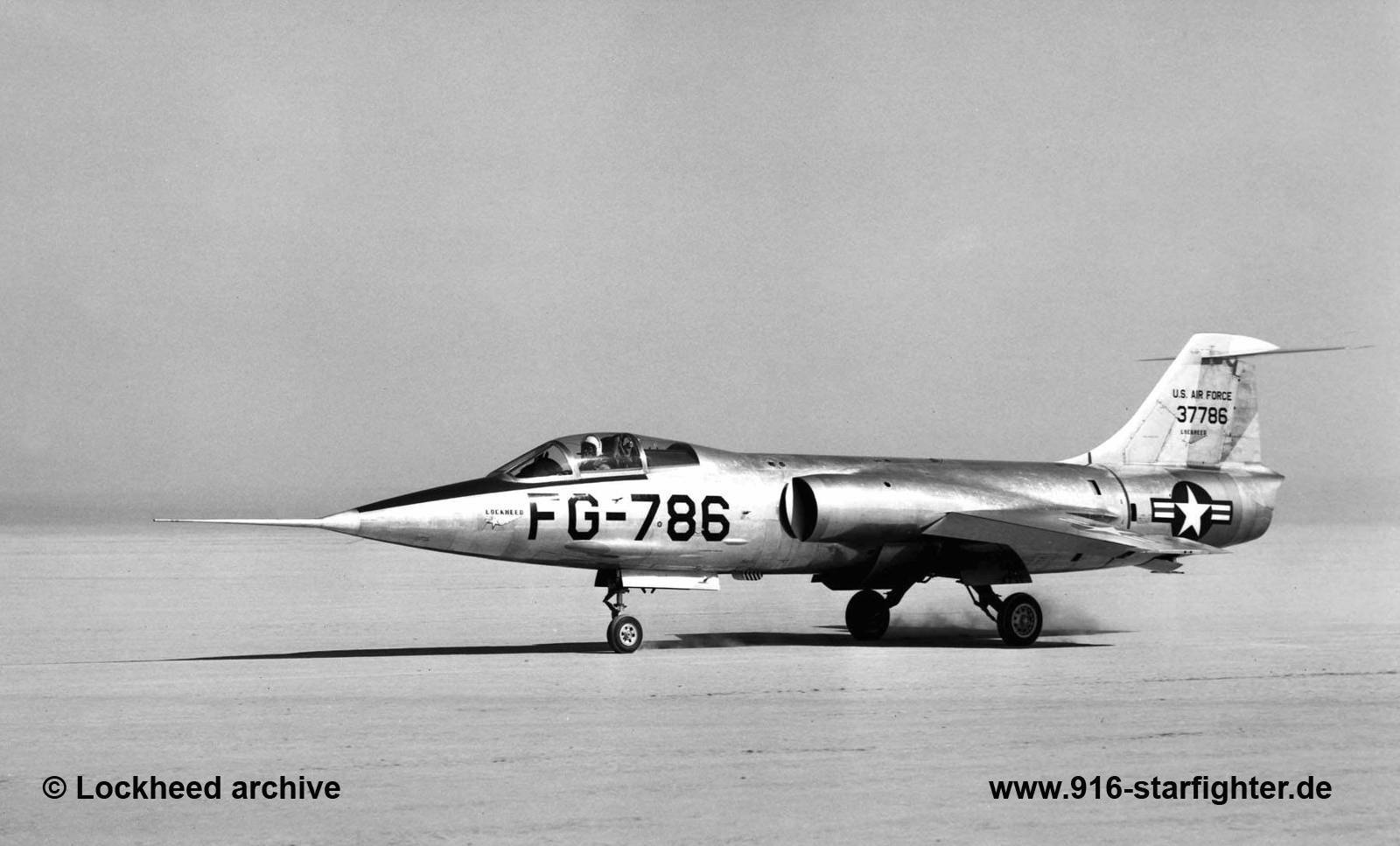
XF-104 37786 rolling on the dry lake runway XF-104, construction number 083-1001, serial number 53-7786, built by Lockheed aerodynamic test bed, February 28, 1954 unplanned taxi lift-off with Anthony W. "Tony" LeVier; first flight March 4, 1954 crashed on July 11, 1957 near Mojave, California due to uncontrollable tail flutter, resulting from a unsecured fuselage fuel tank cap coming off and striking the vertical stabilizer, testpilot Bill Park ejected safely. The XF-104's original yaw damper was ineffective, allowing the nose to wander left and right. This problem was corrected by revising the rudder-centering device. The XF-104 could not exceed the speed of sound in level flight when powered by the non afterburning J-65-B-3 turbojet. However, Mach 1 could be easily exceeded during a slight descent, and the transition to supersonic speed was quite smooth. In July of 1954, the J65-B-3 non-afterburning engine was replaced by the long-awaited afterburning J65-W-7 turbojet rated at 7800 lb.s.t. dry and 10,200 lb.s.t. with afterburner. In that same month, 17 more service test aircraft were ordered. They were also to be powered by the J65-W-7. With the afterburning engine installed, the performance of the XF-104 was markedly improved. Maximum level speed was Mach 1.49 at 41,000 feet, and an altitude of 55,000 feet could be attained in a zoom climb. Mach 1.6 could be attained in a dive. copyright © Lockheed archive
